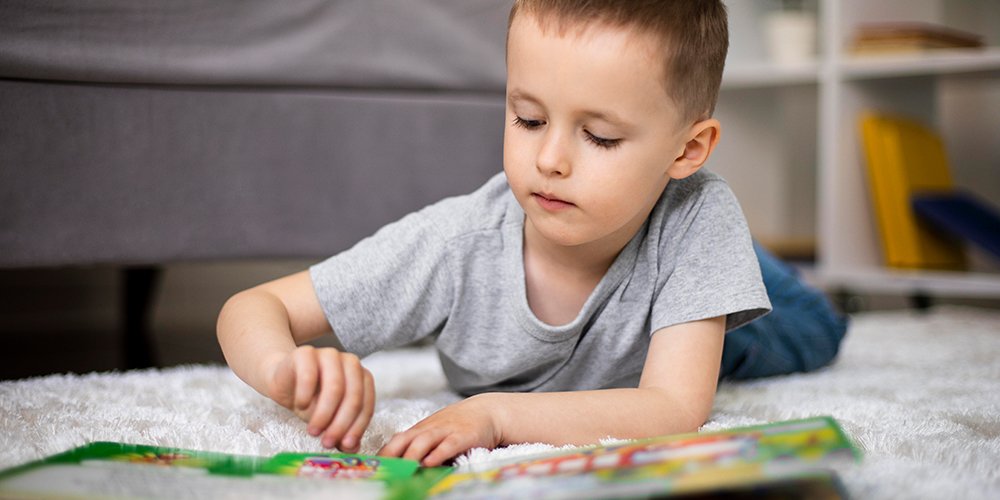
How to Make Reading Fun for Kids Using Educational Toys Leave a comment
“Mom, I will read this book tomorrow… I feel like playing now.”
If you have heard this from your child, you are not alone.
Children today are so used to technology and visual media that books seem slow, boring and ‘school-like’ to them. But this does not mean that they do not want to read – they just want to understand the studies in their own language. And what is their language?
Play.
Now imagine, what if we make books a part of their play?
What if the story comes not just on paper but in their hands, in their voice and in their toys?
This is what Educational Toys do – they make reading not just interesting but an experience.
❓ Why is children's interest in reading decreasing?
Children's moving away from reading is not just due to technology. There are many emotional and behavioral reasons for this:
- Screens have distracted attention
Mobile, YouTube, games — everything is fast, colorful and gives instant satisfaction.
In comparison, books are quiet, move slowly, force you to think. - Studying has been made a burden
Studying in school often becomes "study for the test". In such a situation, studying starts to seem like a burden, not a pleasure. - There is no opportunity to connect with stories
The habit of telling stories to children has decreased. Stories are no longer a part of their lives; they have just become a unit of the syllabus.
👉 Solution? Reading will have to be made a habit of happiness again — and for this we will have to convert studies into the language of play. Educational toys do just that.
🧸 What are Educational Toys?
Educational toys aren't just for playing — they're tools that sow the seeds of learning through play.
These toys are designed to help children learn language, math, logic, creativity and social skills without realizing it.
What's so special about them?
- They're open-ended — meaning you can learn a lot from one toy.
- They encourage a child's innate curiosity.
- And most importantly — there are no "wrong answers," only experiences.
When it comes to reading, Educational Toys:
- Introduce letters
- Turn stories into games
- Make reading a group experience, not a solitary activity
🎯 How to make reading fun — through Educational Toys
Now let’s talk about practical ways — to transform reading from a boring experience into a world of joy and discovery.
- 🧙♂️ 1. Storytelling Toys
Puppets, dolls or story-themed toys make children “characters” in the story.
They don’t just listen to the story, they live it.
For example: “Today we will enact ‘The Lion and the Mouse’. Who wants to be the lion?”
This is not reading, it becomes a combination of drama + thinking + language. - 🔤 2. Alphabet & Word Games
Magnetic letters or letter puzzles teach children spelling while playing.
“Let’s make ‘B-R-A-I-N’ out of BLOCK today and see what it does!” This way, playing and learning in language happen simultaneously. - 📖 3. Interactive Books & Readers
Tools like Leap Reader give books a voice — the child listens, touches, and learns. These are especially effective for children who are afraid of written words. - 🎲 4. Word & Story Games
Toys like Story dice, Bingo, Scrabble Jr. make words playable.
"The cube that rolls today will bring the next twist to the story!"
The child learns vocabulary while laughing. - 🧱 5. Read & Build
Read the story, build a scene out of LEGO, then talk about it.
“What does Little Red Riding Hood’s Forest look like? Let’s build it.” This is called multi-sensory learning — one story, many skills.
🏠 How to create a "Reading Play Corner" at home?
You don't need to have a library to read. A small, well-designed corner can make studying magical.
How to create it?
- 📚 Story Shelf: Easy and colorful books, within reach
- 🧸 Toy Basket: Puppets, dice, alphabet blocks
- 🪑 Cozy Sitting: A mat, cushion or a small tent
- 🎨 Story Board: Drawing or collage of each week's story
- 💡 Theme-based variations: "Animal Week", "Space Week" etc.
👉 This corner can become the child's "Reading Adventure Zone".
👩👩👧👦 5 Practical Tips for Parents and Teachers
- Say “play a story” instead of “read a book”; Don’t tell the story to the children – make them the story tellers.
- Keep a fixed time, but the environment should be flexible: There should be a fixed time every day – 15-20 minutes. But this time should not be a strict discipline, but a happy experience.
- Add a small toy to every book
Story + puppet = Act it
Story + blocks = Build it
Story + cube = Recreate it - Let the child choose — Which book, which activity – the child decides. This brings ownership.
- Don’t just ask “what did you read” – also ask “what did you feel”: This connects studies with emotions, which leads to deeper understanding.
🧾 Conclusion: Not the burden of studies, but the discovery of stories
If studies are made a burden, the child will run away from it.
But if studies are made a game, a discovery, an adventure – then the same child will connect every book to himself.
This is what Educational Toys do.
They bring the book in the hand, the story on the stage, and turn reading into a smile.
For children, reading is not a destination – it is a journey.
And if Educational Toys are with you in this journey, then the path as well as the destination will be colorful.

